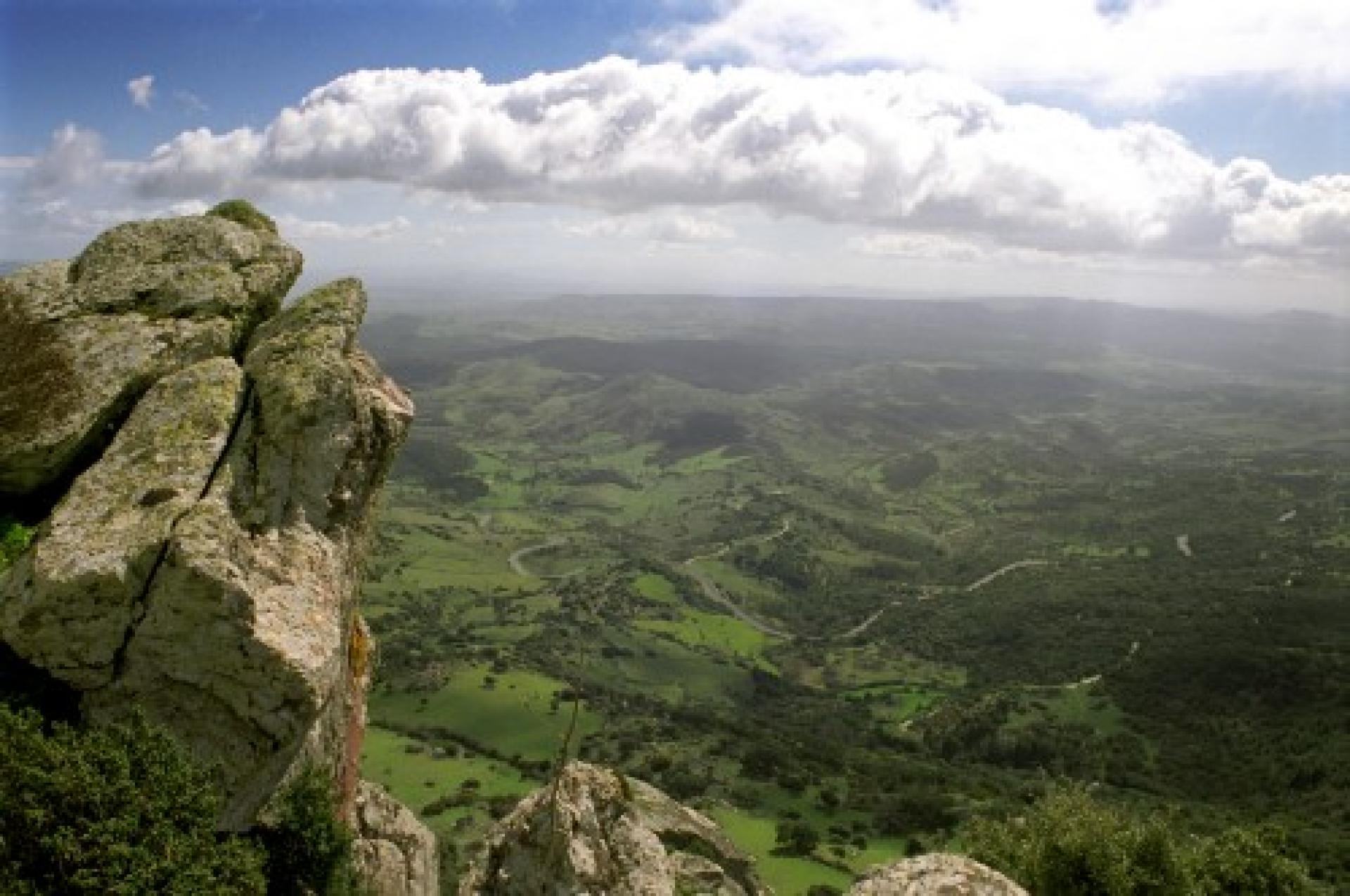Arci Grighine

Arci Grighine
: description
Mount Arci is an isolated massif of volcanic origin that straddles the territory of numerous municipalities of the Oristano area, on the Uras plain: Marrubiu, Santa Giusta, Villaurbana, Palmas Arborea, Usellus, Villaverde, Pau, Ales, Morgongiori, Masullas and Siris. It reaches a maximum height of 812 metres a.s.l. with the Trebina Longa peak, flanked by the Trebina Lada (703) and Corongiu de Sizoa (463) peaks. Historically, Mount Arci was always of enormous importance for its
abundant obsidian deposits. This vitreous mineral was, in fact, extremely useful for the production of tools and prehistoric weapons. The obsidian deposits exploited over the millennia are still visible on the mountain slopes (Perdas Urias, S'Ennixeddu, Roja Cannas, Tzipaneas), as are the related collection centres and processing workshops. At Pau
you can visit the Neolithic site of Su forru de is sintzurreddus, at Villaverde the nuragic complex of Brunc 'e s'omu and at Morgongiori the cave sanctuary of Sa domu de is coambus. In Pau, a
unique museum has been opened dedicated entirely to obsidian. There are also contemporary obsidian sculptures made from colossal-sized blocks displayed in the main area and throughout the country. Most of the surface of Mount Arci is covered with holm oaks, but there are also cork oaks, downy oaks and wide stretches of Mediterranean scrub. One of the largest and most beautiful holm oak forests is found at Acqua Frida in the territory of Ales, which is criss-crossed by numerous springs.
The area boasts an abundance of fauna and recently deer and fallow deer have been reintroduced, while birds that nest here include peregrine falcons, sparrowhawks, goshawks, kestrels and lesser kestrels.

